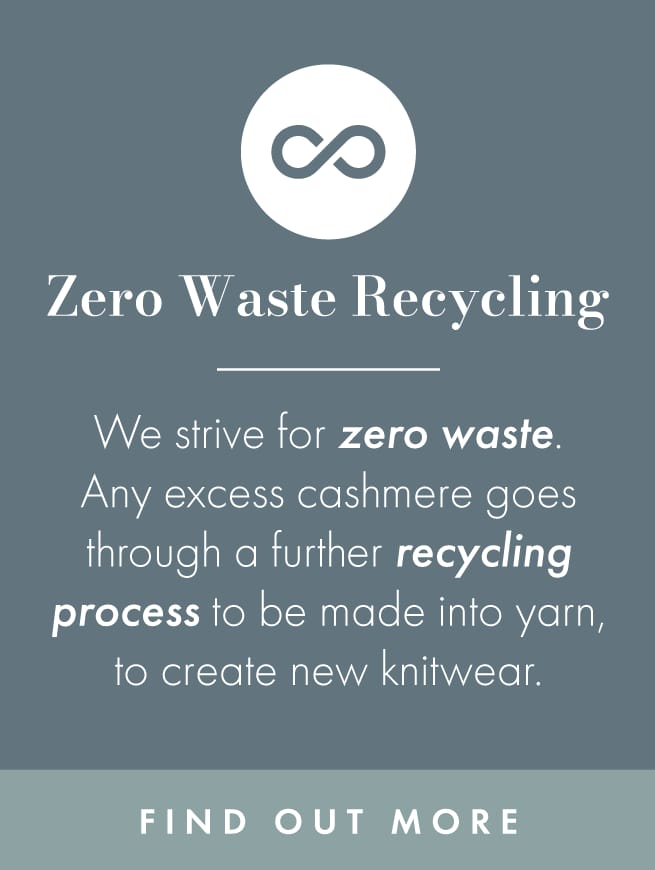How do we make sure it's cashmere?
We check that the labels on each jumper state the fabric is 100% cashmere. A random sample of the jumpers is placed under a microscope for fibre analysis (see below) before we proceed with our recycling process.
We were extremely excited to find out the various characteristics of cashmere. The most important of all is that cashmere fibres have scales that are smoother and flatter than other animal fibres or synthetics. Hence why cashmere is so easy to wear and feels soft against the skin.

The growth spurts indicate that it grows slowly, and we can see the shine of the edges of these growth spurts under the microscope.
All other textiles with a different density, a certain type of shine, colour or a coarser look instantly indicate that these are non-cashmere. Man-made fibres also cannot be naturally hollow, which is another quality that we look out for.
The fine undercoat of goats, consisting of dense, thin and soft hairs, is what's used to create cashmere. It is this undercoat that gives cashmere wool its unique characteristics. Animal fibres have scales that protrude; the larger the scales the more they stick out, therefore the itchier the fibre will feel. Cashmere has smoother and flatter scales and is one of the easiest animal fibres to wear.
Once we've identified and separated our non-cashmere and cashmere fibres, we donate our non-cashmere jumpers to local charity shops, continuing their life cycle!
Our recycled cashmere accessories are close fitting, making them comfortable even when they're close to your skin. Cashmere is also a breathable natural fibre, it is light by weight and warmer than wool, therefore you don't overheat as easily when you're wearing cashmere. You can browse some of our best selling recycled cashmere fingerless gloves, wrist warmers, neckwarmers and loops.





